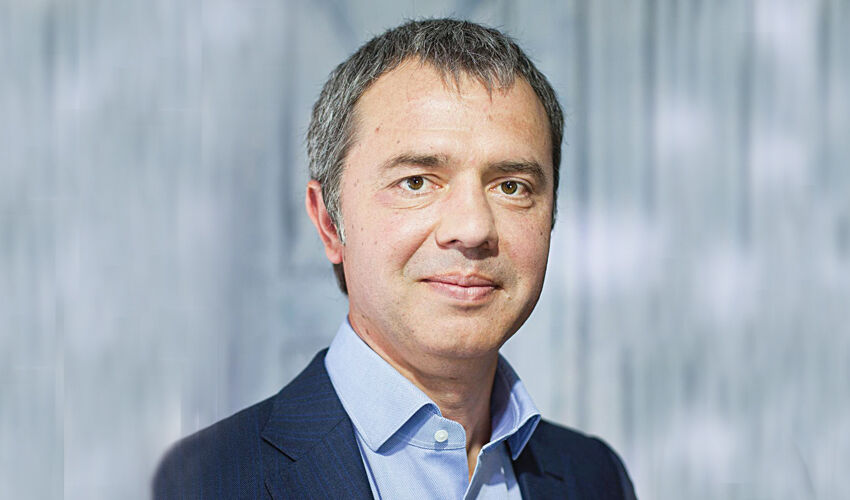
Sergey Maximov
LP: – What are the specifics of the Moldovan market of household appliances, if you look at it from the manufacturer’s point of view?
– Moldova has jumped through several stages of market development, which Western European countries went through slowly and quite painfully. What was formed in Western Europe for decades, appeared here almost immediately: access to world brands, modern technologies, online trade. Therefore, the Moldovan consumer is very demanding in this sense. He is used to comparing prices online, sees European reviews, travels abroad. If the equipment is positioned as quality, he expects that in terms of assembly and functionality it will be the same as in Berlin or Vienna, and not a simplified version for third countries. That is why everything new – technology, design, functionality – gets here very quickly and finds demand.
I should note that in terms of the availability of the product matrix, we have not differed from developed Western markets for a long time. Another thing is the structure of demand, the level of income, and the traditions of use.
LP: – Are there any items that you select specifically for Moldova – something that distinguishes our assortment from Europe or the USA?
– We do not form a separate product line for Moldova. The differences start at the level of habits and usage scenarios. There are global and regional goods in the world. The same airplane “Boeing” is the same in Africa, America, Europe – there is no need to invent a separate model for the region. But household appliances are a different case: they must meet regional needs. For example, only for Eastern Europe we equip refrigerators with two egg trays. There is no such tradition in other countries. Only in our countries does a refrigerator often serve as a first aid kit. In Western Europe, almost never.
In these behavioral minutiae we can see all the regional specifics. And when we design or adapt our assortment, these things are taken into account.
LP: – How do you assess the Moldovan market in terms of the level of saturation of household appliances?
– There is a professional indicator – penetration of household appliances in the household. If we are talking about refrigerators, washing machines – there the indicator is 97-98%. That is, almost every home has a basic set. But if we take dishwashers, our penetration is only 7-8%. For comparison, in Turkey this indicator exceeds 80%. The situation is similar for dryers and built-in solutions. These are not just numbers, but an indicator of cultural habits and market potential. Where appliance penetration is 98%, we can count on fleet renewal. Or new households: each new house or apartment triggers a chain of upgrades: moves, repairs, replacement of old appliances, sale or “inheritance”. One commissioned housing “unit” means several sales of appliances in different households. For us, this is a signal: the Moldovan market is small, but structurally promising. This is what forms a stable business on the horizon of not one or two years, but ten or more.
LP: – If we talk about money, what does the Moldovan buyer choose – cheaper or better?
– There are two requests. The first one is mass, where the determining factor is the average salary in the country. We understand the difference in income between Moldova and Germany, so the average price of an appliance will be different. The second demand is for qualitative, reliable, more expensive equipment. It is growing, and we are closing it. Mostly through branded stores, because the shelf in the electronics supermarket is limited by the logic of turnover and is focused on the mass segment.
At the same time, an important trend of recent years is noticeable: the share of cheap equipment is shrinking. People are starting to focus not only on the price tag, but also on service life, power consumption, and the cost of service. Buyers are increasingly asking the question: “How much will it cost me over 10 years?”.
LP: – Bosch is often perceived as a premium brand, and therefore not the most affordable. Is this really the case?
– LP: – Not really. Bosch is represented from the middle segment to the premium segment. We consciously do not go to the lowest price range – it is not the level of resource we are ready to use. For us in Moldova, the middle segment is the basis of sales. We feel confident in it, and within the brand there are ranges to suit different needs: in terms of design, functionality, and price.
I would like to emphasize that one of Bosch’s main differences is the breadth of its range. The company is represented in different product groups, from small and built-in appliances to freestanding and large appliances. And this is an important part of the strategy in countries like Moldova: people can choose within one brand, rather than assembling the same kitchen from five random brands.
Many competitors are highly specialized – some focus only on vacuum cleaners, others on small household appliances, others on refrigerators. We are systematically present in all key categories and are able to cover almost any reasonable demand.
LP: – How do you form prices? Are they linked to the solvency of the region?
– We do not have a practice when the same device is more expensive in Western Europe and noticeably cheaper in Moldova. The factory price for all regions is the same. The difference in the final price arises due to customs duties, VAT, logistics, operating costs and commercial policy of local partners. If we take large household appliances, the margin in the world does not exceed 4-6%, for small appliances – 6-8%. These are very modest figures. Therefore, talk about “double standards” in relation to such markets as Moldova does not correspond to reality: the manufacturer has no room for maneuvers.
LP: – Today the trend is large-format retail, but you persistently develop branded stores. Why?
– Because the purchase of equipment is increasingly becoming a conscious investment story. A person reads reviews, compares online, but at some point he wants to see the equipment with his own eyes, to talk to an expert, not to a consultant who works for the third month and serves 20 brands. In an electronics superstore, the average salesperson’s tenure is shorter, turnover is higher, shelf space is limited, and time per customer is minutes. A branded store is a different quality of contact, a different depth of consultation, a different breadth of assortment.
On a supermarket shelf you will see two or three Bosch models, in a branded outlet – dozens. Only there you can explain why two identical-looking refrigerators cost 500 and 1500 euros: they have different compressor, electronics, temperature fluctuation range. The cheap version will work with a variation of plus or minus 5 degrees, the expensive one – plus or minus 0.5 degrees. This directly affects the freshness of products, the preservation of useful properties. When you show this to the consumer with concrete examples, he looks at the price differently and makes a different decision.
And, by the way, I do not agree that large format retail is now in first place. All sales channels (online, multi-brand chains, branded retail) are showing growth. In Europe, Bosch is opening branded stores in major cities – Vienna, Hamburg, Brussels, Rome. In Turkey, there are already more than 2,000 Bosch brand outlets. They are appearing in Egypt, Vietnam, Indonesia, Morocco, i.e. the format is actively developing, and this is a global strategy.
LP: – But the format itself is more expensive. Do these costs affect the price?
– It is indeed more difficult to maintain a branded store than to give the goods to a chain shelf. But this does not mean that it is automatically more expensive for the customer.
LP: – What do you think about multichannel sales for Bosch in Moldova?
– You can’t separate: “network buyer”, “online buyer”, “brand store buyer” – it’s the same person at different stages of choice. Someone starts with the site, then goes to the store to touch the equipment, and eventually makes the purchase online. Someone, on the contrary, gets a consultation with us and pays through a partner. Our task is to be consistent in any channel, respecting the same philosophy of quality and the same level of responsibility.
LP: – “Smart functions” – Internet connection – is this already about Moldova or a future plan?
– We do not divide the markets into “worthy of smart functions” and “unworthy”. The strategy is as follows: we build a connection module into almost all new appliances – from premium to basic models. So far, I would call it an investment in the future. Household appliances live a long time, the fleet is renewed slowly. But there will come a point when the share of connected appliances becomes critical, and then it will be possible to talk about updates, about integration, as we are already used to with smartphones.
LP: – Bosch appliances live a long time. How do you get people to update their assortment?
– The declared service life is 10 years, but in fact our appliances live longer. In terms of the environment and energy consumption, this is not always a plus. A refrigerator bought 15-20 years ago can consume 30-50% more energy than a new one. Therefore, one of the key trends is energy efficiency, and here Bosch is traditionally among the leaders. Moldova has already switched to new European standards for energy efficiency labeling, and we often exceed the stated requirements in terms of the total number of modes.
LP: – How do you see the Moldovan market in the next five years?
– I would single out three megatrends. The first is energy efficiency. The second is a gradual shift away from extremely cheap appliances in favor of reliable solutions of medium and “medium plus” level. The third is the growing role of service and expert advice: people are less willing to put up with “disposable” appliances and want clear guarantees and honest dialog. Plus I would add the strengthening of planning culture. The purchase of appliances in Moldova is beginning to be viewed not as an impulse expense, but as part of a long-term household asset.
LP: – In Bosch stores at the entrance there is a portrait of Robert Bosch and the inscription “It is better to lose money than the customer’s trust”. How much does it cost to keep a customer’s trust?
– I have the same poster hanging in my office, and it’s not just a historical artifact. A company with nearly 140 years of history can’t afford to treat it like a pretty quote. In any borderline situations on warranty, on repair, on controversial cases, we make a decision in favor of the client. Yes, you may not make enough money once, but trust always pays off in the long run. Especially in markets like the Moldovan market, where personal recommendations are stronger than any advertising. For a mature consumer, this is one of the key criteria for choosing a brand, and we understand it well.








